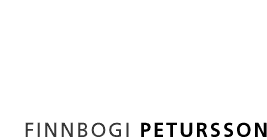
|
BOMB Magazine Wood Street Galleries, Pittsburgh On his second stop at Wood Street Galleries, Icelandic artist Finnbogi Petursson returns withSecond/Second, his first solo US exhibition, featuring two large installations involving sound, light, and water. Infra-Supra (2014) has a long, shallow pool of water on the ground with three equidistantly placed small speakers just above the water’s surface. The speakers repetitively deliver the equivalent of three hertz of sound onto the water below and these recurring sound waves generate expanding concentric circles in the pool. Via strategically placed lighting, the patterns on the water then project onto the wall in the form of shadows and create a fluid, animated dance, which is reflected again on the water, resulting in a quasi-infinite interfusion of below (infra) and above (supra). The central wave pattern is mirrored symmetrically on the wall, creating a billowing flame-like shape that swells and deflates. At times all three speakers pulse at once, causing three sets of intersecting patterns; at other times, one or two speakers remain silent and the wall above them remains empty. To the visitor, the three-hertz sound waves register as a barely audible humming and are more felt as a pulse than heard. This exact frequency mimics that of the brain in a restful state, and, together with the visuals, provides the essentials for a meditative trance. Tesla Tune (2014) fills the third floor with a lush soundscape. The performing instruments are eight white PVC pipes of varying lengths, which are suspended from the ceiling by fishing lines and arranged from shortest to longest, evoking a pipe organ on its side. Entering the space, one is enveloped by a pleasant cadence of sound emanating from the tubes. The humming stems from the sequential pulsing of sixty hertz, and while the input frequency remains a constant for each tube, the output tonality differs according to their lengths. The visitors’ sound perception changes depending on their physical position to the pipes. As you move around the space, you "compose" your own tonal pattern. The steady rhythmic pulsing eventually transports you into a pleasing hypnotic state. Petursson confines himself to a limited set of variables with the sound wave as his conceptual constant. The underlying physics and math are deployed using a sophisticated mix of mechanical and sound engineering in combination with computer-generated sequencing. Sound frequencies provide the infrastructure and essentially drive his installations, but they remain very much in the background. Petursson orchestrates it all seamlessly, allowing for an immersive experience where the audience can interact with the piece on many levels—without technical overload and without sensing the artist’s presence. Like an excavator, Petursson uncovers his relationship to the earth by digging down to the core elements and working his way out to the surface. The repetitive character and minimalist framework seem somewhat contrary to the powerful "romantic" effect of the installations. For me, the work parallels the sensual experience of being one with nature and how we marvel at it, analytically, in retrospect, when we understand its complexity. The link between nature and science is filtered through Petursson’s personal lens, which has been forged by his profound connection to the cultural and physical landscape of his homeland. Iceland, as an island literally riding the rift between the European and North American tectonic plates, provides a unique and eventful soundscape that includes silence as much as violent geological upheaval. Petursson transforms and shares this experience with his spare installations, where the permanent and the ephemeral, the densely layered and the empty, closely coexist.
— Scott Turri is an artist and musician based in Pittsburgh. He contributes writing toAfterimage magazine and Arthopper.org, and also works in experimental video. - Scott Turri, 2015 |